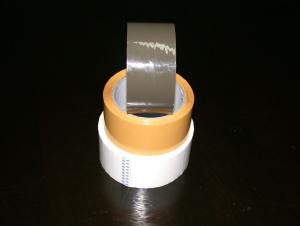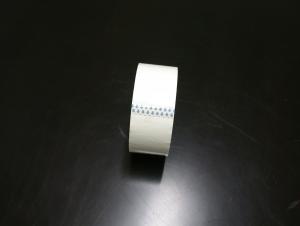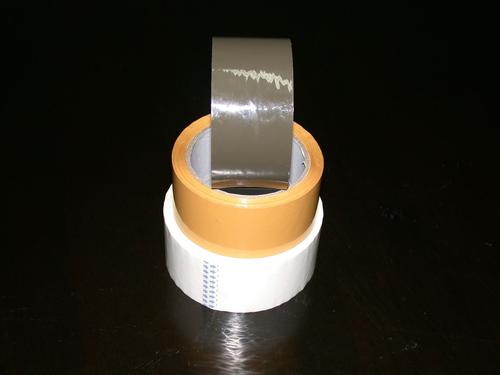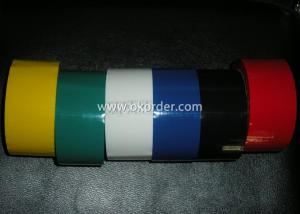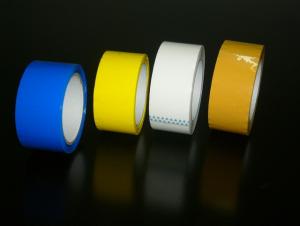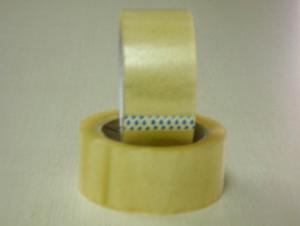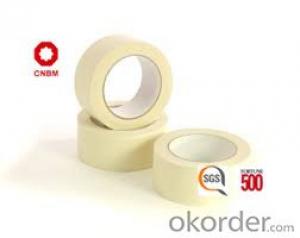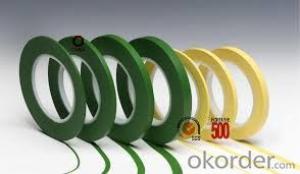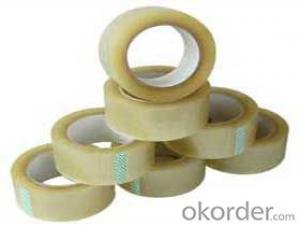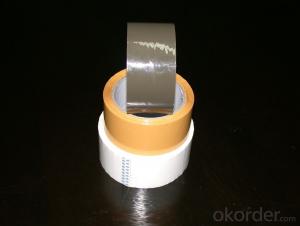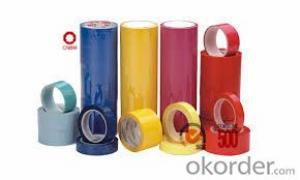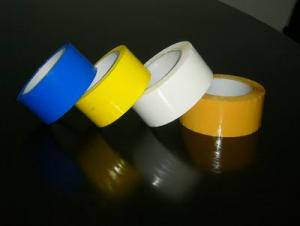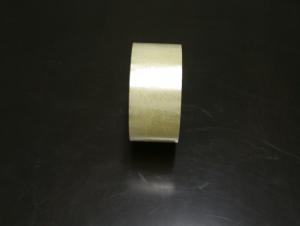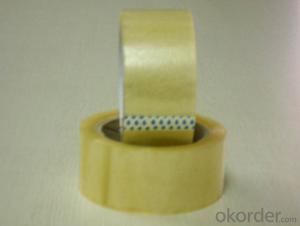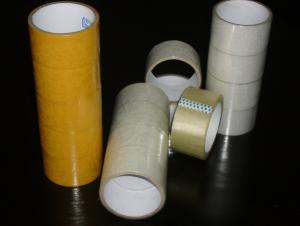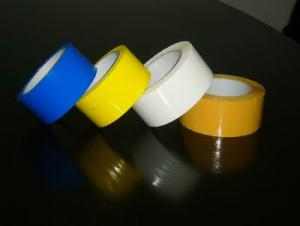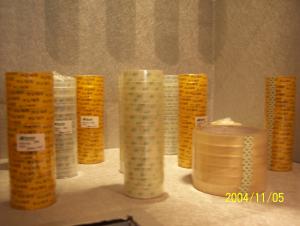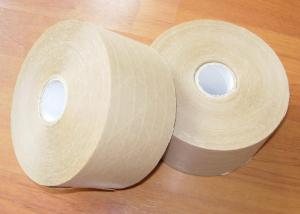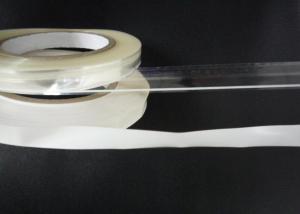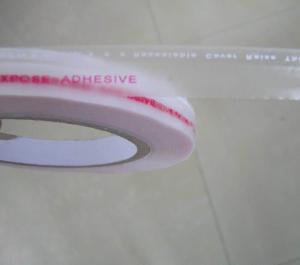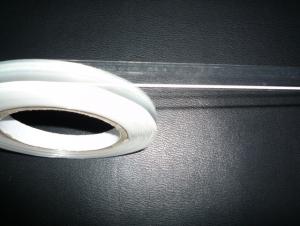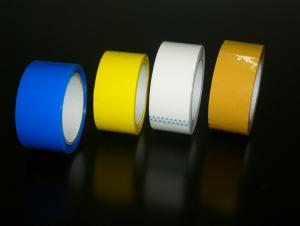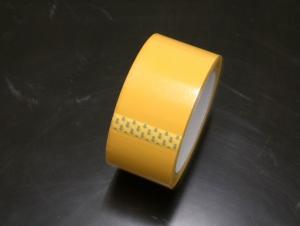Packaging Tape Hand Strong Adhesive BOPP Packing Tapes BP-3
- Loading Port:
- China Main Port
- Payment Terms:
- TT OR LC
- Min Order Qty:
- -
- Supply Capability:
- -
OKorder Service Pledge
OKorder Financial Service
You Might Also Like
Product Description:
Quick details:
· Material: BOPP
· Use: Carton Sealing
· Adhesive Side: Single Sided
· Adhesive: Acrylic
· Adhesive Type: Water Activated
· Design Printing: Offer Printing
· Place of Origin: China (Mainland)
· color: clear, super clear, crystal clear, red, blue, brown, yellow, green etc
Specifications:
ItemNo. | Carrier | Adhesive | Total | Initial | Peel Adhesion | Holding | Tensile | Elongation |
BP-40 | BOPP film | water based acrylic | 40 micron | >18# | 0.5kgf/25mm | >24h | >30N/cm | <180% |
BP-45 | BOPP film | water based acrylic | 45 micron | >18# | 0.5kgf/25mm | >24h | >30N/cm | <180% |
BP-50 | BOPP film | water based acrylic | 50 micron | >20# | 0.5kgf/25mm | >24h | >30N/cm | <180% |
BP-65 | BOPP film | water based acrylic | 65 micron | >24# | 7.88N/25mm | >40h | >30N/cm | <180% |
Application:
Bopp tape is mainly for Carton sealing & packing, Light duty packaging, bundling, holding, and other office & household use.
Packing:
Paper Core ID: 76mm
Jumbo size: 1280mm x 4000m; 1625mm x 4000m
Cut roll size: As per customer's requirement
Cut rolls: 6 rolls per shrink, 36/54/72 rolls per carton with or without pallet
Jumbo rolls & log rolls: Packed with kraft paper and stretch wrap film, with or without pallet
- Q: What is the difference between acrylic and hot melt adhesive for packaging tape?
- Packaging tape commonly utilizes two types of adhesives: acrylic and hot melt. These adhesives possess distinct characteristics that set them apart. A significant disparity lies in their bonding strength. Hot melt adhesive boasts exceptional bonding strength, making it ideal for heavy-duty applications. It creates a robust and durable bond that can withstand rigorous handling and varying temperatures. Conversely, acrylic adhesive typically offers a lower level of bonding strength in comparison. While still suitable for most general packaging requirements, it may not be the best choice for heavy or bulky items. Another distinction can be found in the application process. Hot melt adhesive is applied in a molten state and solidifies once cooled. Typically, it is dispensed using a hot melt glue gun or applicator. The quick setting time of hot melt adhesive allows for swift packaging operations, making it popular in high-volume settings. On the other hand, acrylic adhesive is applied in a liquid form and requires some time to cure and establish a strong bond. It can be applied using a hand dispenser or tape gun, and optimal adhesion often necessitates some pressure. Moreover, hot melt adhesive demonstrates excellent adhesion to a wide array of surfaces, including cardboard, plastics, and metals. Its versatility allows for usage with various packaging materials. While acrylic adhesive also adheres well to different surfaces, it may not exhibit the same level of compatibility with certain low-energy surfaces, such as polyethylene or polypropylene. Furthermore, temperature resistance is an essential factor to consider. Hot melt adhesive performs admirably in both high and low temperatures, maintaining its bonding strength. It can endure freezing temperatures and heat without compromising its adhesive properties. Acrylic adhesive, while generally offering good temperature resistance, may not be as effective in extreme conditions, particularly at very high or low temperatures. In conclusion, the primary disparities between acrylic and hot melt adhesives for packaging tape lie in bonding strength, the application process, surface compatibility, and temperature resistance. While hot melt adhesive provides superior bonding strength, rapid setting time, and excellent temperature resistance, acrylic adhesive offers versatility, ease of application, and good adhesion to most surfaces. The choice between the two depends on specific packaging needs, materials used, and environmental conditions.
- Q: Is packaging tape easy to cut with scissors?
- Yes, packaging tape is generally easy to cut with scissors. The tape is designed to be easily cut with regular household scissors, making it convenient for various packaging needs. The combination of its thickness and adhesive properties allows for clean and precise cuts, ensuring that the tape can be easily managed and removed when necessary.
- Q: Is packaging tape safe for use on children's toys or products?
- Packaging tape is not recommended for direct use on children's toys or products. While packaging tape is commonly used for sealing and securing packages, it is not designed or tested for contact with children's skin or for use on items that may come into direct contact with their mouths or eyes. Children's toys and products are subject to specific safety regulations and guidelines to ensure they are safe for use and do not pose any harm to children. It is important to follow the manufacturer's instructions and use appropriate materials that are specifically designed for children's toys and products, such as non-toxic adhesives or child-safe tapes, to ensure the safety of children.
- Q: Can packaging tape be used for sealing plastic clamshell packaging?
- Yes, packaging tape can be used for sealing plastic clamshell packaging. Packaging tape is designed to securely seal various types of packaging materials, including plastic clamshell packaging. It provides a strong adhesive bond that holds the clamshell packaging together and prevents it from opening during shipping or handling. Additionally, packaging tape is durable and tear-resistant, ensuring that the clamshell packaging remains sealed and protected throughout the entire distribution process.
- Q: Does packaging tape come in different lengths for convenience?
- Yes, packaging tape does come in different lengths for convenience. Packaging tape is available in various lengths to meet the needs of different packaging tasks. The most common lengths of packaging tape are 55 yards (50 meters) and 110 yards (100 meters). These lengths are designed to cater to different packaging needs and ensure that there is enough tape to securely seal multiple packages without running out. Additionally, the availability of different lengths allows for flexibility in choosing the most suitable amount of tape for specific packaging requirements, ensuring convenience and cost-effectiveness.
- Q: How does packaging tape perform on recycled or eco-friendly packaging materials?
- When it comes to recycled or eco-friendly packaging materials, packaging tape tends to perform well. The performance of the tape, however, will ultimately depend on the specific type of material being used. Recycled packaging materials, like cardboard or paper, typically have a rougher surface than traditional packaging materials. Nevertheless, packaging tape is specifically designed to stick to various surfaces, even those with different textures. As a result, it should adhere well to recycled materials without any major issues. Eco-friendly packaging materials, such as biodegradable or compostable plastics, may possess slightly different properties in comparison to traditional plastics. Nonetheless, most packaging tapes are designed to work effectively with different types of plastics, including eco-friendly options. It is crucial to ensure that the packaging tape you select is compatible with the specific eco-friendly material you are utilizing. In general, packaging tape is created to provide a secure and reliable seal on packaging materials, regardless of whether they are recycled or eco-friendly. However, it is always advisable to test the tape on a small area of the material prior to applying it to the entire package. This will help ensure proper adhesion and compatibility.
- Q: Can packaging tape be used for sealing furniture or home goods?
- Packaging tape can indeed be utilized to seal furniture or home goods. Its design aims at delivering a secure and robust seal, rendering it apt for diverse applications like sealing boxes and packages. By employing packaging tape on furniture or home goods, one can effectively safeguard the item during transportation or storage. It is crucial to ensure the tape's proper application, avoiding any surface damage or residue. Furthermore, depending on the item's weight and size, it may be advisable to employ specialized tapes or techniques specifically tailored for sealing furniture or home goods, ensuring optimal protection.
- Q: As for the title, just bought the tape cutter, but I don't know how to use it. I bought it in plastic. Used for packing express boxes. It's better to use a process chart for me to see.. Thanks。。 Or clear words can also...
- Strip the tape first. Put your head in the cutting edge. Put the tape in the middle of the sealing machine.
- Q: What are the tapes for packing tape?
- Size, core, stationery, glue, wet water, leather tape, double sided tape series
- Q: Which kind of adhesive tape is of good quality?
- There are many kinds of tape. If you ask for a tape seal, then the simplest thing is stickiness and toughness. A lot of bad sealing tape is very fragile, it is easy to break, manufacturers in order to confuse consumers will tape to do relatively thick, in fact, a little loose volume. It depends on what tape you ask.
Send your message to us
Packaging Tape Hand Strong Adhesive BOPP Packing Tapes BP-3
- Loading Port:
- China Main Port
- Payment Terms:
- TT OR LC
- Min Order Qty:
- -
- Supply Capability:
- -
OKorder Service Pledge
OKorder Financial Service
Similar products
Hot products
Hot Searches
Related keywords
